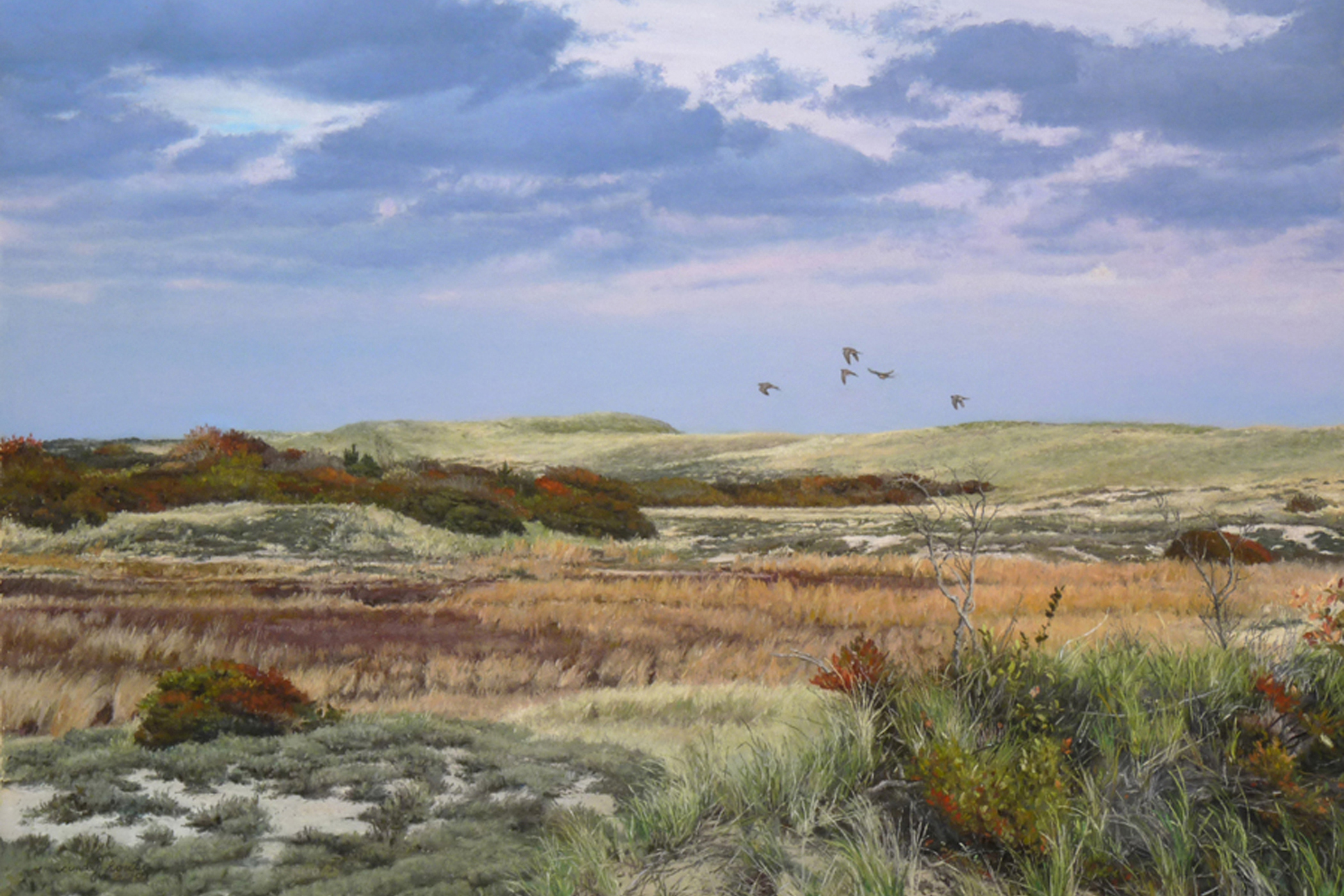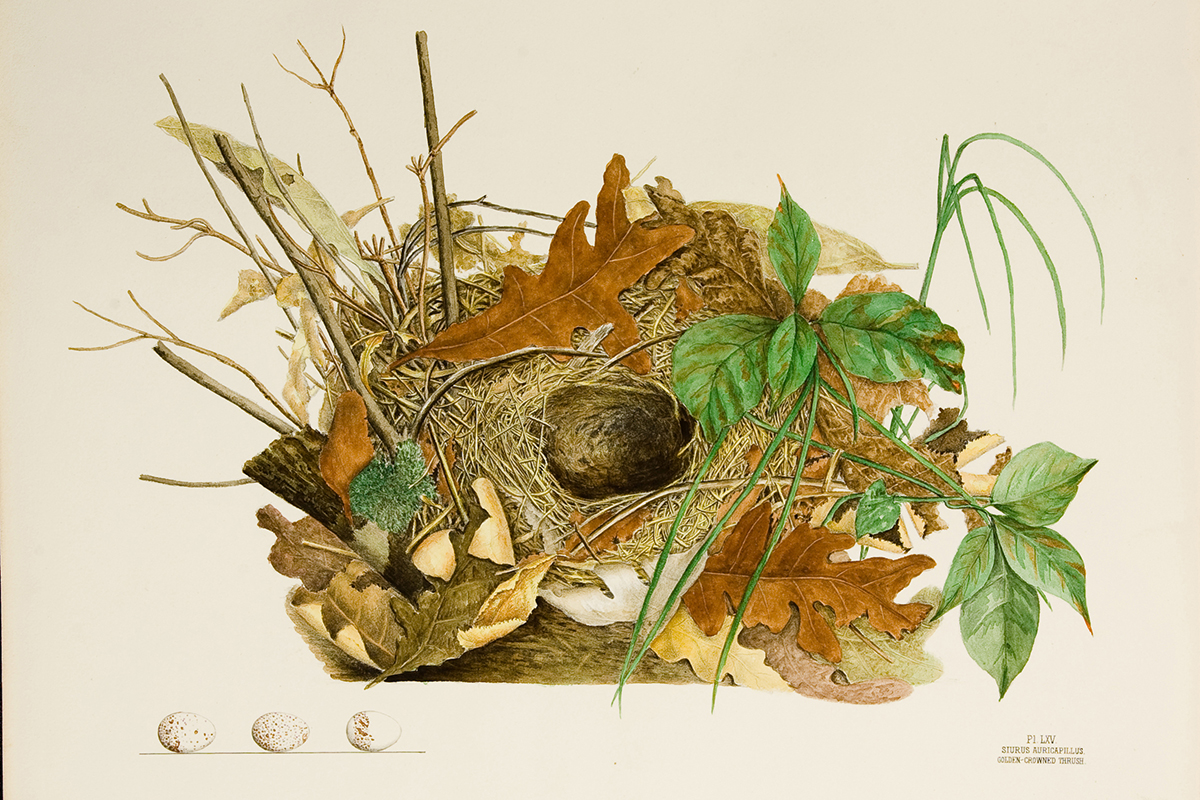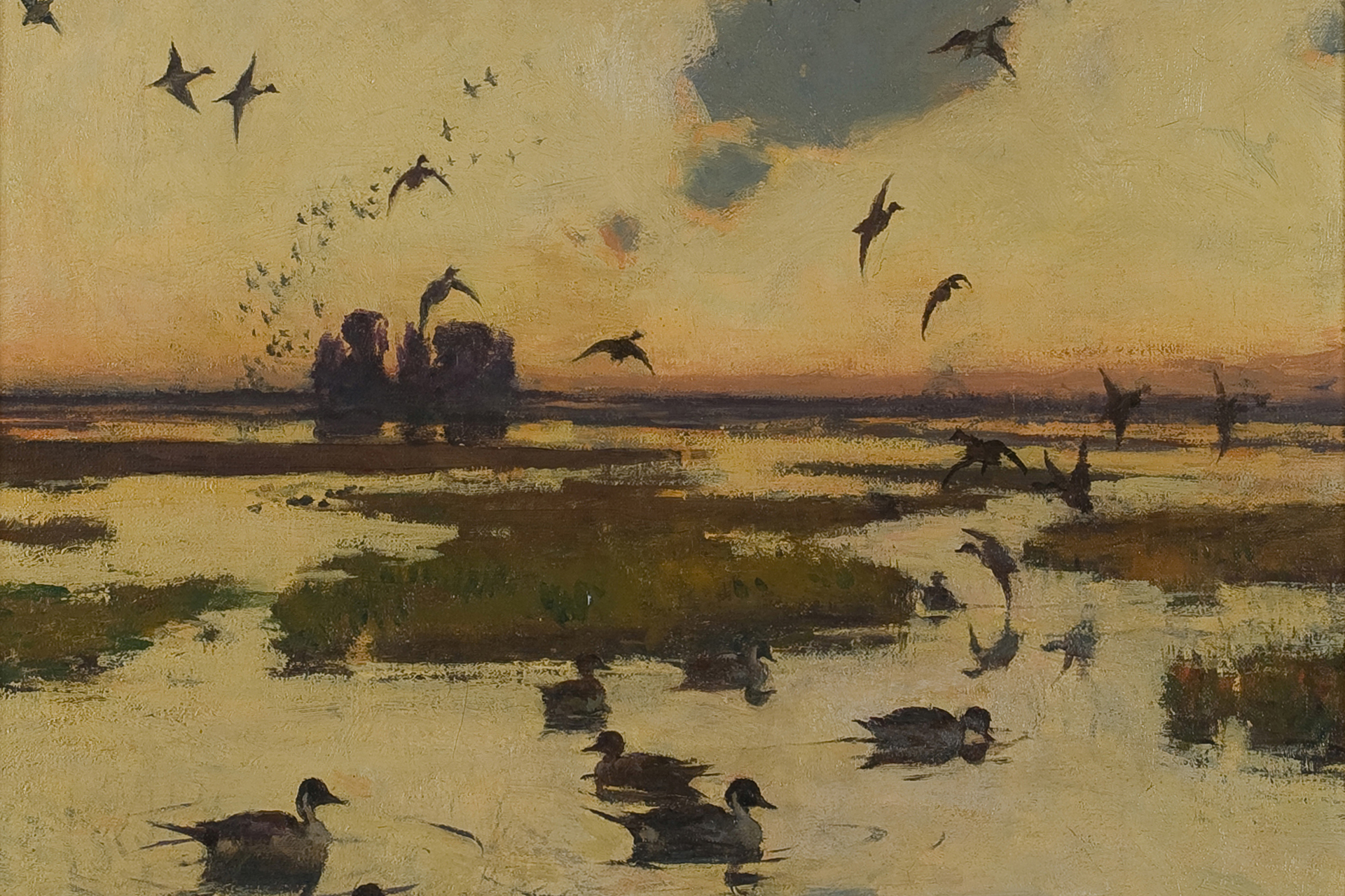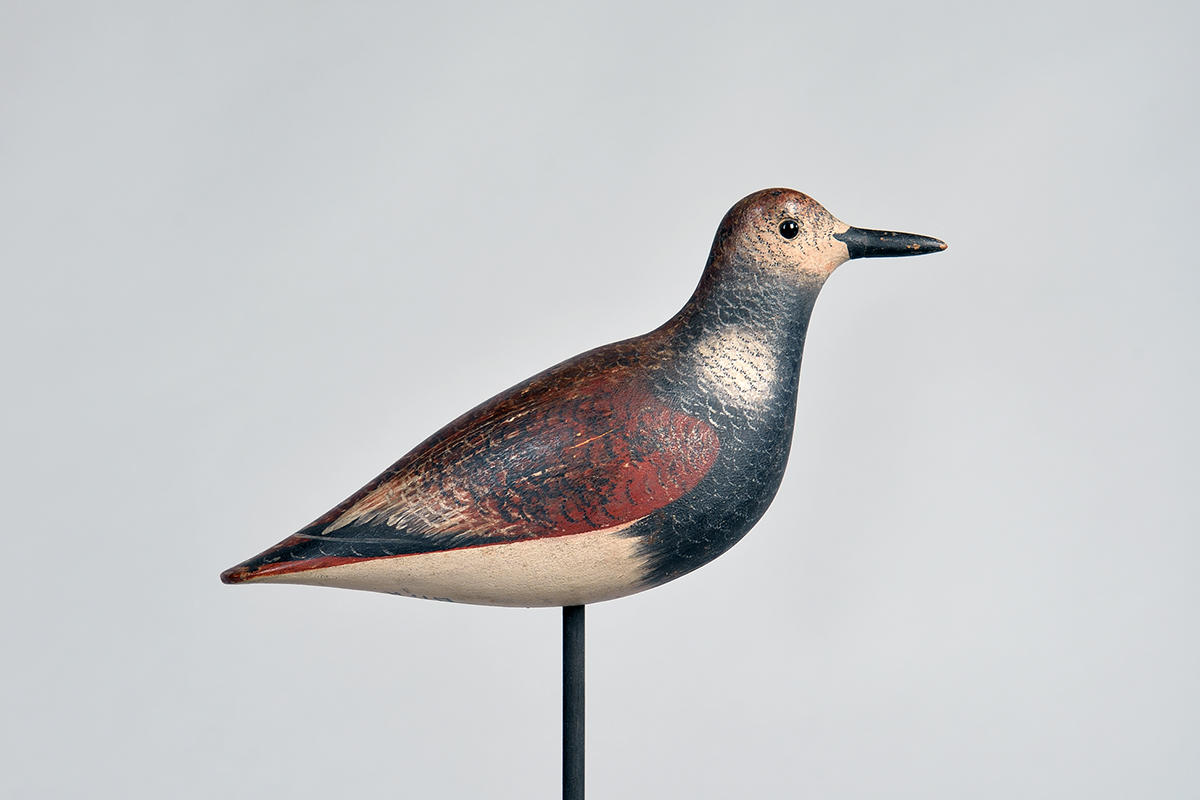Special Event: January 25, 2024 - April 11, 2024
Be sure to check out our fall lecture series
Over the centuries, art inspired by birds has been a creative response to the sheer beauty and wonder of the birds that share our world. Undoubtedly birds project more symbolic meaning than any other creatures, from the power of the eagle to the peace of the dove. Bird art has also served more practical purposes: to spread scientific knowledge as well as to promote bird conservation. And collectors have prized bird art for all these reasons, and more.
Explore some of the many facets of bird art through the eyes of artists, curators, scientists, scholars, historians and educators in this engaging series of seven free programs, which all take place via Zoom. All registrants will receive a link to a program recording after each lecture.
If These Artworks Could Talk! Glimpses into the Art, Artists and Collectors Behind the Museum’s Collection
Look at some of the treasures of bird art in Mass Audubon’s art collection, spanning several centuries, and many genres. Hear the stories of the people with deep connections to the art. Who made it and why? Who collected it? How did it come to be in Mass Audubon’s collection? Whose passion for it ensured that it was preserved?
Amy Montague is the director of the Museum of American Bird Art at Mass Audubon. In her three decades in that role, she has stewarded Mass Audubon’s remarkable art collection, curated more than 30 exhibitions of art inspired by birds, and conceived and managed nearly 50 more.
Looking Closely: Connections Between Art and Science
Look closely at the inherent beauty of nature’s microscopic world to see the interplay between art and science. We’ll take a deep dive into some microscopic structures found in nature, such as feathers and pollen attached to native bees, and see how these structures inspire artists, the creative process, and how maker spaces use images like these to fabricate models of the microscopic structures in nature.
Lorna Gibson is the Matoula S. Salapatas Professor of Materials Science and Engineering at the Massachusetts Institute of Technology. Her work focuses on the mechanical behavior of materials, specializing in materials with a cellular structure, such as engineering honeycombs and foams, scaffolds for regenerative engineering, and natural materials such as wood, bamboo and plant leaves and stems.
As Arts and Nature Education Manager, Sean Kent leads Mass Audubon’s art and nature programs at “The Nest,” a creative educational space at the Museum of American Bird Art Education Center in Canton.
Specimen, Sport, and Spirit: Collectors and the Varied Interpretations of Bird Art
Bird art is a collecting category with many branches. Colleene Fesko and Amy Montague will engage in a lively discussion exploring why bird imagery speaks to several, often quite different, audiences—and if, in fact, there is a common denominator.
Colleene Fesko, frequently seen on the hit PBS television series Antiques Roadshow, is a fine art and antiques appraiser and broker. Most recently as a consultant with Christie’s American Painting Department, her experience includes more than two decades at Skinner Auctioneers and Appraisers.
Amy Montague is director of Mass Audubon’s Museum of American Bird Art.
Frank W. Benson: Artist, Ornithologist, Conservationist
As a boy, Frank W. Benson spent every free moment tramping the marshes surrounding his boyhood in home in Salem, Massachusetts and sketching the birds that filled them. His first painting, at age 16, was of a snipe. Almost 70 years later, his last oil was of two eagles. Benson spent the many decades between the two paintings being a teacher and world-famous painter, an etcher, and a portraitist who was often unable to keep up with the demand for his work. During his illustrious career, Benson was that rarest of things—an artist who became famous, respected and wealthy by his art during his lifetime.
Benson scholar Faith Andrews Bedford traces Benson’s journey from his boyhood dream of being an ornithological illustrator to his fame as an American Impressionist, culminating in his full circle return to depicting—and saving—the birds which first inspired him.
Faith Andrews Bedford is an art historian and a noted authority on Frank W. Benson. She is the author of three books on Benson, including The Sporting Art of Frank W. Benson. She participated in exhibitions of Benson’s art at the Peabody Essex Museum, as co-curator, and at the Farnsworth Art Museum, as guest curator.
Shorebirds in Modern Times: Two Centuries of Art, Science, and Conservation
Subhankar Banerjee has traveled the world, doing archival and field research (and photography) on shorebirds. His journeys have taken him across the United States to field locations in Alaska, Massachusetts, Maine, and New Mexico, and internationally to the Sundarban Tiger Reserve in India and Wadden Sea National Park in Denmark.
He is working toward a three-volume book and an accompanying exhibition, which will aim to include three entangled histories—art, material and visual culture; conservation; and science—and bring the story forward to the present day to honor and bring attention to the imperiled shorebirds of our time. Subhankar will discuss how today’s bird conservation movement resonates with a similar call issued during the late 19th century in the United States, sharing recent and current cultural battles and conservation initiatives.
Subhankar Banerjee is Professor of Art & Ecology and Founder and Director of the Center for Environmental Arts and Humanities at the University of New Mexico.
The Making of a Field Artist
Barry Van Dusen’s art and career took on an exciting new dimension when he decided to devote himself to drawing and painting nature subjects outdoors—direct from life. Hear about his inspirations and influences, his challenges and setbacks, and his progress and successes as he learned the art of working directly from his natural subjects.
Barry Van Dusen is an internationally recognized wildlife artist, and the author and illustrator of Finding Sanctuary: An Artist Explores the Nature of Mass Audubon. He received the prestigious Master Wildlife Artist award from the Woodson Art Museum in 2014. With the Artists for Nature Foundation, he has traveled to Europe, Asia and South America creating art in support of conservation.
Reminiscences: A Half-century Among Carved Birds and Their Collectors
Over the course of her long career, Gigi Hopkins has seen enormous changes in the world of decoys and miniatures: who collects them, how they are sold, and how they are understood by the art market and by museums and scholars. Working for many of the most discriminating collectors, she was in the midst of it all. Amy will interview Gigi about some of her most memorable experiences.
Gwladys (Gigi) Hopkins is the author of Massachusetts Masterpieces: The Decoy as Art. She has been a conservator of decoys and carousel figures for more than fifty years, and has been a guest curator for several exhibitions at the Museum of American Bird Art. Amy Montague is the Director of the Museum of American Bird Art.
Stay Connected
Don't miss a beat on all the ways you can get outdoors, celebrate nature, and get involved.






